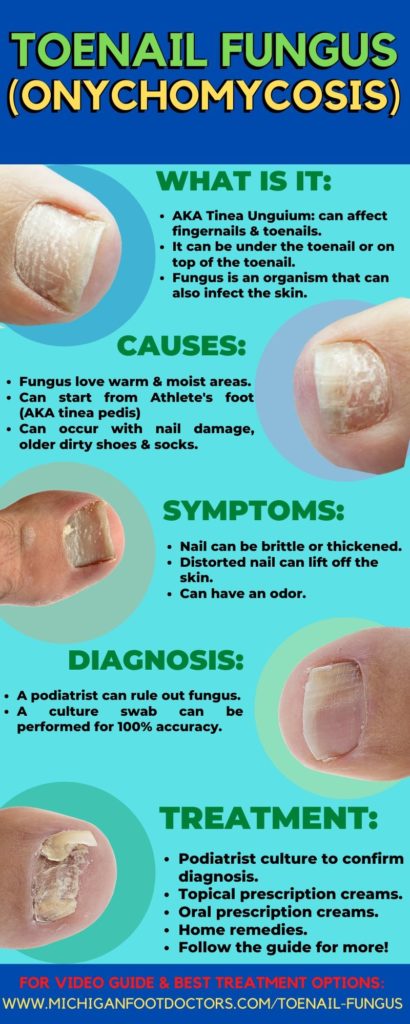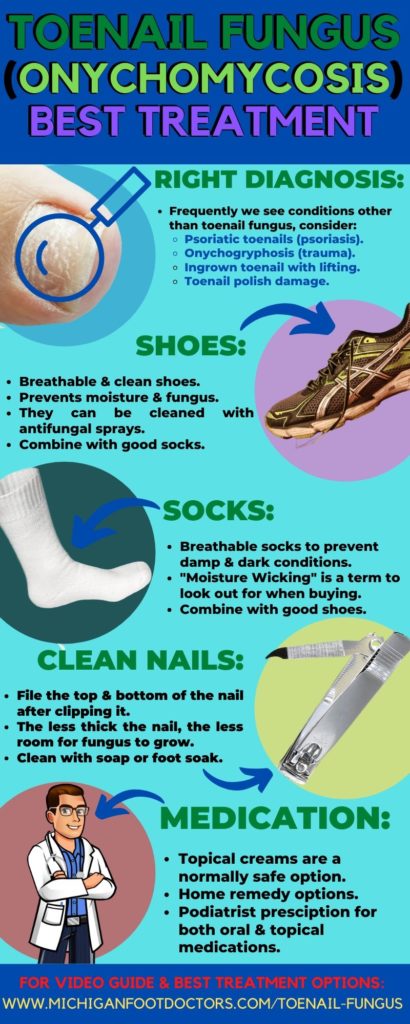Expert Foot & Ankle Treatment from Michigan’s #1 Podiatrist - Balance Foot & Ankle Specialist
Best Ingrown Toenail Doctor in Howell & Bloomfield
Expert Ingrown Toenail Doctor for Ingrown Toenail Removal in Michigan
If you’re searching for an Ingrown Toenail Doctor Near Me, you’re in the right place. At Balance Foot & Ankle Specialist, we specialize in providing the best ingrown toenail removal in Michigan—with gentle, expert care designed to relieve your pain fast. Whether you’re dealing with redness, swelling, or discomfort from a recurring ingrown nail, our podiatrist-led team is here to help you walk comfortably again, often with same-week appointments available.
Who Is The Best-ingrown Toenail Doctor Near Me?
The Best-ingrown Toenail Removal Near Me?
We believe podiatrists and foot doctors are the best-trained specialists for ingrown toenail removal. We are biased, but we have a long track history and excellent reviews after removing 1,000s of ingrown toenails safely, for a lower cost and with better long-term results!
Please don’t take our word for it; see what our patients have to say!
Ingrown Toenail Surgery Near Me
We believe podiatrists have the most training and proven track history in performing ingrown toenail surgery.
This is a same-day procedure that can be performed relatively painlessly and in a relatively short visit.
Most of our patients are back on their feet quickly and back to work and school the next day if there are no unexpected setbacks.
Toenail Fungus Causes

Toenail Fungus (Onychomycosis) Treatment & Cure Options

Ingrown Toenail & Curved Toenail Photo Gallery
Look:
- An ingrown toenail is also known as onychocryptosis.
- An ingrown toenail can include toenail fungus, which is called onychomycosis.
- If the toenail is very thick and rough, this is called onychogryphosis.
- We have specific guides for how to fix an ingrown toenail, when to see a doctor for an ingrown toenail, and how to pursue ingrown toenail surgery.
- This gallery also shows MRI images that can lead to a bone infection in very severe cases of ingrown toenails.
- Don’t wait too long. See your podiatrist!
So, feel free to click on the gallery for descriptions & please share!
Ingrown Toenail Removal
There are three types of ingrown toenail removal that we can perform for you.
1. Medical Pedicure:
Medical pedicure consists of using specialized sterile instruments that we prepare specifically for you. This includes cleaning and shortening your thick and or fungal toenails.
We then perform a smooth to ensure your toenails do not have any sharp segments I would get caught in your socks.
At this point, we would then moisturize your feet.
While we do this, we evaluate you for any decreased blood flow, nerve disorders, any skin disorders.
This is not a cosmetic medical pedicure excavation point. This is specifically based on medical standards, and we make sure there is nothing unhealthy going on in your foot.
2. Ingrown Toenail Removal Treatment:
To remove your ingrown toenail to the root, we would have to numb up your toe.
If an infection is present, we will use a wound culture to ensure no abnormal bacteria growing care.
If there are signs of significant infection, we will start you on an antibiotic.
If there are no issues at this point, we will provide addressing, and you should feel better over the next 1 to 2 days.
3. Permanent Ingrown Toenail Removal:
Another name for this is a total matrixectomy.
If you have this ingrown toenail coming back more than two or three times, it may be worth applying medication to the root of the removed toenail.
This is much less likely to allow the toenail ever to go back.
At this time, the wound site will need one to two weeks to heal fully. He can usually get discovered with a Band-Aid.
Once this is performed, it is doubtful for your nail to come back shortly.
Types of Ingrown Toenails We Remove
Chronic Ingrown Toenail Removal
- A chronic ingrown toenail can be considered an ingrown toenail that has come back at least 3 times or is present for more than 2-6 weeks.
- It is not normal to have a chronic ingrown toenail, and her podiatrist should treat this.
What causes chronic ingrown toenails?
- Chronic ingrown toenails are usually caused by the skin pinching against the nail rather than the nail pinching against the skin.
- This might sound like a confusing concept, but it is usually pressure applied onto the skin that causes the problem.
- Some studies have shown that a chronic ingrown toenail is usually caused not a genetic deformity of the nail. It is usually caused by repeated pressure on the big toe joint or the second toe, or the fifth toe.
- We frequently see ingrown toenails develop more on people who are on their feet all day.
- This is usually on a foot type with more pressure tightness and potentially bunion formation.
Chronic ingrown toenail surgery:
- We performed chronic ingrown toenail surgery almost every single day within our office.
- We believe that it is a relatively straightforward and low-risk procedure with excellent results.
- Studies show that ingrown toenail surgery in the office is both safe and effective.
- We start this process by providing a numbing agent to your toe, usually administered with a freeze spray and a very, very tiny needle.
- After a few minutes, the toe should have a minimal sensation, similar to a tooth procedure at the dentist’s office.
- At this point, we used sterilized and hygienic tools to remove the corner of the ingrown toenail.
- We can permanently remove this corner by applying some medication. This is called a permanent ingrown toenail removal surgery.
Chronic ingrown toenail treatment:
- The best way to get chronic ingrown toenail treatment is to visit your local podiatrist’s office for ingrown toenail removal surgery.
- If you have a chronic ingrown toenail, this could lead to an infection and lead to big problems.
- Insurance covers ingrown toenail removal procedures with a podiatrist or foot doctor.
- We recommend rather than trying to treat it at home, follow with the specialist and be safe.
- Treatment is tough at home for a chronic ingrown toenail as this can cause severe pain and potentially lead to further risk.
How to fix a chronic ingrown toenail?
- The best way to fix and chronic ingrown toenail is to see your podiatrist or foot doctor.
- As mentioned above, it is covered by insurance, and if you do not have insurance, it can be performed for a relatively low cost.
- So what are you waiting for does? Give us a call and get your toenail taken care of.
Constant ingrown toenails:
- Constant ingrown toenails are similar to chronic ingrown toenails.
- We like to think of constant ingrown toenails as happening at least 3 times or more or sticking around for 2 weeks or more.
- These constant ingrown toenails can lead to possible infected ingrown toenails and significant issues.
- Rather than trying to claim constant ingrown toenails for disability, do come to see a podiatrist and get your ingrown toenail removed.
Constant ingrown toenail pain:
- If you are getting pain in the corner of your toenail, stop the pain and see us for a quick ingrown toenail removal procedure in the office.
- We consider this a very safe and effective procedure, with relatively low-risk vacancies feeling better very quickly.
Impacted toenail vs. ingrown toenail:
- Suppose you have an impacted toenail. This means that the root may be dislodged or jammed backward into the toenail.
- An impacted toenail can be thought of as a toenail that is jammed backward into the toenail root.
- If this is the case, we may have to perform a total nail removal to allow your entire nail to grow back.
- This will require some anesthetic, but it can be performed in the office.
Impacted vs. ingrown toenail diagnosis:
- This diagnosis is most easily made by seeing if the toenail is loose.
- An impacted toenail will usually be loose and show dried blood or red blood underneath the toenail.
- It could even just be a clear nail if it dislodged over time.
- If you are worried about an impacted toenail versus an ingrown toenail, schedule an appointment with the podiatrist, have a professional evaluated, and take great care of your foot.
Impacted toenail treatment:
- An impacted toenail is very difficult to treat at home.
- In our experience, the best treatment is to anesthetize the toe and remove the toenail.
- We think that this is a prevalent cause of toenail fungus for most people.
- If the toenail is impacted and avulsed from the tissue underneath the nail, it is no longer receiving blood flow.
- If this toenail is no longer receiving blood flow, it is basically like a thick skin flake on top of your toe.
- This is, unfortunately, a good home for bacteria and fungus.
- This could lead to an impacted toenail infection, and it can be tough to clean this impacted toenail.
Impacted toenail cleaning:
- In our experience, we do not believe impacted toenail cleaning is worth it.
- As we mentioned above, this nail will likely not grow back if the blood flow is severed.
- It is best to get seen by a toenail specialist like a podiatrist or foot doctor and get this toenail safely and effectively removed.
- In this way, it can be challenging to fix and impacted the toenail because it is essentially ripped off dead tissue.
- But if it is removed safely, then the new nail can grow back within a few months.
Impacted toenail removal:
- We perform impacted toenail removal surgery almost daily.
- We believe that this is a very effective and safe treatment that yields excellent results.
- Once in the office, this procedure can be performed within about 15-20 minutes, with minimal downtime afterward.
- Having an impacted toenail removed can sometimes feel much better at the end of the first day than before having the procedure done.
- This is our experience with most of our patients.
Ingrown toenail removal cost:
- In almost every situation, this should be covered by insurance.
- An infected ingrown toenail should be considered an urgent medical problem that should be taken care of soon as possible.
- A toenail infection with an ingrown toenail is a hazardous condition that can hospitalize you untreated.
- As podiatrists and foot doctors, we take this very seriously, and we will be there to help you with your ingrown toenail care.
Ingrown toenail removal near me:
- If you require ingrown toenail removal surgery or podiatrist care, we would love to help!
- Give our office a call as soon as possible!
Frequently Asked Questions About Ingrown Toenails
Ingrown toenails often develop when the edges or corners of the toenail grow into the surrounding skin. Common causes include improper nail trimming, tight-fitting shoes, injury, or hereditary nail shape.
You should visit an Ingrown Toenail Doctor if you experience persistent pain, swelling, redness, or signs of infection like pus or warmth. Early treatment can prevent complications and speed up healing.
Mild cases may be managed at home with warm water soaks, wearing open-toed shoes, and gentle nail elevation. However, if there’s no improvement or symptoms worsen, it’s best to consult a foot specialist.
A podiatrist can safely remove the ingrown portion of the nail, apply medication if infected, and even perform a minor in-office procedure to prevent recurrence if the problem is chronic.
To reduce your risk, trim your nails straight across (not curved), wear properly fitting shoes, and avoid cutting nails too short.
With modern numbing techniques, most patients report little to no discomfort during the procedure. Your Ingrown Toenail Doctor will ensure you’re comfortable every step of the way.
Yes, especially if the root cause isn’t addressed. A podiatrist may recommend a permanent solution if you have frequent recurrences, such as partial nail matrix removal.

